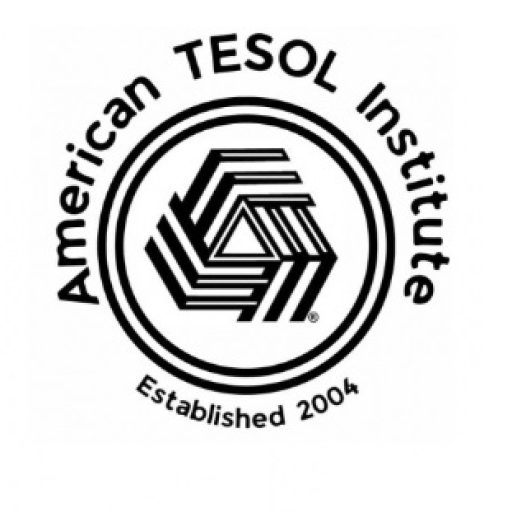Empower Your TESOL Classroom with Technology
In today’s digital age, technology is revolutionizing how we teach and learn languages. For TESOL (Teaching English to Speakers of Other Languages) educators, integrating audio recording tools and apps into lessons can open up a world of opportunities. These tools allow students to practice speaking, listening, and pronunciation in a way that’s engaging, interactive, and reflective. Whether you’re working in a traditional classroom or teaching online, audio recording provides a powerful way to enhance language acquisition.
In this article, we’ll explore the benefits of using audio tools, provide examples of practical activities, and recommend some of the best apps and tools for TESOL classrooms.
Why Use Audio Recording Tools in Language Learning?
- Develops Speaking Fluency and Confidence
- Recording audio gives students the chance to practice speaking without the pressure of immediate feedback. It allows them to rehearse and self-correct, which is especially helpful for learners who are shy or nervous about speaking in front of others. Over time, this leads to greater confidence and fluency.
- Improves Pronunciation and Intonation
- Hearing themselves speak helps learners become more aware of how they sound in English. They can focus on intonation, stress, rhythm, and pronunciation by comparing their recordings to native speakers or their own progress over time. With guidance, students can make noticeable improvements in these areas.
- Enhances Listening Skills
- Listening to their own recordings or those of classmates sharpens students’ listening comprehension skills. Teachers can use recorded audio to train students to focus on specific features, such as sounds that are difficult for them to differentiate or understand in real-time conversations.
- Promotes Self-Reflection and Improvement
- Audio recordings give students a chance to reflect on their performance. By listening back to their recordings, they can identify areas for improvement and track their progress. This process builds autonomy in learning, encouraging students to take ownership of their language development.
- Fosters Creativity and Engagement
- Audio recording tasks allow for more creative assignments, such as creating podcasts, storytelling, interviews, or even role-playing scenarios. These projects engage students in meaningful language use and make learning fun and dynamic.
Practical Activities for TESOL Classrooms Using Audio Tools
Here are some exciting ways to integrate audio recording tools into your TESOL lessons:
- Pronunciation Practice
- Have students record themselves reading a passage or repeating specific phrases. Then, provide feedback on their pronunciation, focusing on problem areas like vowel sounds, consonant clusters, or intonation. Students can re-record after feedback to see their improvement.
Activity Example: Assign a short dialogue or paragraph and ask students to record themselves reading it. Compare their recordings to a native speaker’s version and have them reflect on the differences.
- Role-Playing and Dialogues
- Use audio recording for role-playing exercises where students practice real-life scenarios, such as ordering at a restaurant, booking a hotel room, or having a job interview. Record their dialogues and have them listen for grammar usage, pronunciation, and natural flow of conversation.
Activity Example: In pairs, students create a role-play of a conversation between a tourist and a local. After recording, they listen to their performance and improve upon it in subsequent recordings.
- Podcast Creation
- Challenge students to create their own podcasts! They can choose topics that interest them, such as hobbies, cultural experiences, or news stories. This is a great way to build fluency and give students a sense of ownership over their learning.
Activity Example: Students work in groups to create a weekly “English Learning Podcast” where they discuss different topics, interview each other, or provide language tips for their classmates.
- Peer Review
- Have students share their recordings with peers and offer constructive feedback. This fosters a collaborative learning environment where students help each other improve their language skills. Peer review encourages active listening and gives students more opportunities for communication.
Activity Example: Students record short presentations on a topic and exchange recordings with a partner. Each partner provides feedback on pronunciation, grammar, and fluency.
- Storytelling Projects
- Ask students to record themselves narrating a story or describing an event from their life. This can be a creative way for students to practice structuring sentences, using transitions, and employing descriptive language.
Activity Example: After studying narrative tenses, students record themselves telling a short story in the past tense. They then share their story with the class and discuss how they structured their narrative.
- Listening and Comprehension Practice
- Teachers can record themselves or other native speakers reading a text or having a conversation. Students listen to these recordings and answer comprehension questions, improving their listening skills while engaging with natural language.
Activity Example: Play a recorded conversation and ask students to answer questions about the key details or infer the speaker’s mood based on tone and intonation.
Recommended Audio Recording Tools and Apps
Here are some popular tools and apps that TESOL teachers can use to bring audio recording into their lessons:
- Audacity (Free)
- A free, open-source audio editor that allows students to record and edit their own audio files. Audacity offers features such as noise reduction and volume control, making it ideal for recording clear, high-quality audio.
- Vocaroo (Free, Online)
- A simple, web-based recording tool that requires no software installation. Students can record audio directly from their browser, download the file, or share it via a link. It’s quick and easy to use, making it ideal for beginners.
- VoiceThread (Free & Paid Versions)
- VoiceThread allows teachers and students to create and share multimedia presentations that include audio recordings. Students can leave voice comments on slides, fostering a collaborative and interactive environment.
- SoundCloud (Free & Paid Versions)
- A popular audio-sharing platform where students can record and upload their podcasts or audio projects. Teachers can create private playlists for student work, providing an easy way to manage and share recordings.
- GarageBand (Free on Apple Devices)
- A powerful, user-friendly app for iOS devices that allows students to record, edit, and produce audio projects. It’s perfect for creating podcasts, music tracks, or spoken word projects.
- Flipgrid (Free)
- A video and audio platform where students can record short responses to teacher prompts. It encourages speaking and listening practice and allows for peer feedback in a safe, monitored environment.
Tips for Success: Making the Most of Audio Recording
- Provide Clear Instructions:
Make sure students understand the objective of each audio task. Give examples of what a good recording looks like, focusing on key areas like pronunciation, grammar, and fluency. - Encourage Practice:
Allow students time to practice before making a final recording. The process of rehearsing and self-correcting is crucial for improvement. - Celebrate Progress:
Help students track their progress by comparing their earlier recordings to later ones. Point out improvements to boost their confidence. - Incorporate Reflection:
Encourage students to reflect on their recordings. What do they notice about their pronunciation or fluency? What areas do they need to work on?
Conclusion
Integrating audio recording tools and apps into your TESOL lessons can transform the way students engage with language. By giving them the opportunity to record, listen, and reflect, you’re empowering them to take control of their learning while making it creative and enjoyable. Whether through pronunciation drills, storytelling, or podcast creation, the possibilities are endless!
Get your students “on the air” today and watch their English skills soar! ??



